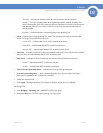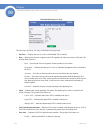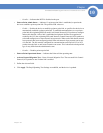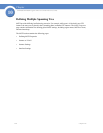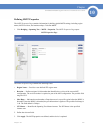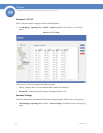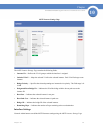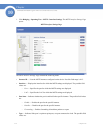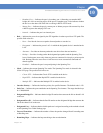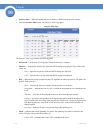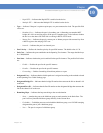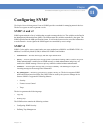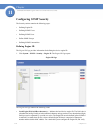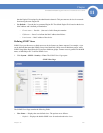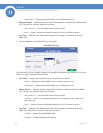
173
Chapter 10:
SFE2000/SFE2000P Gigabit Ethernet Switch Reference Guide
Chapter
10
– Boundary Port — Indicates the port is a boundary port. A Boundary port attaches MST
bridges to LAN in an outlying region. If the port is a boundary port, it also indicates whether
the device on the other side of the link is working in RSTP or STP mode
– Master Port — Indicates the port is a master port. A Master port provides connectivity from
a MSTP region to the outlying CIST root.
– Internal — Indicates the port is an internal port.
• Role — Indicates the port role assigned by the STP algorithm in order to provide to STP paths. The
possible field values are:
– Root — Provides the lowest cost path to forward packets to root device.
– Designated — Indicates the port or LAG via which the designated device is attached to the
LAN.
– Alternate — Provides an alternate path to the root device from the root interface.
– Backup — Provides a backup path to the designated port path toward the Spanning Tree
leaves. Backup ports occur only when two ports are connected in a loop by a point-to-point
link. Backup ports also occur when a LAN has two or more connections connected to a
shared segment.
– Disabled — Indicates the port is not participating in the Spanning Tree.
• Mode — Indicates the current Spanning Tree mode. The Spanning Tree mode is selected in the
Global STP page. The possible field values are:
– Classic STP — Indicates that Classic STP is enabled on the device.
– Rapid STP — Indicates that Rapid STP is enabled on the device.
– Multiple STP — Indicates that Multiple STP is enabled on the device.
• Interface Priority — Defines the interface priority for specified instance. The default value is 128.
• Path Cost — Indicates the port contribution to the Spanning Tree instance. The range should always
be 1-200,000,000.
• Designated Bridge ID — Indicates that the bridge ID number that connects the link or shared LAN
to the root.
• Designated Port ID — Indicates that the Port ID number on the designated bridge that connects the
link or the shared LAN to the root.
• Designated Cost — Indicates that the default path cost is assigned according to the method selected
on the Spanning Tree Global Settings page.
• Forward Transitions — Indicates the number of times the port has changed from Forwarding state
to Blocking state.
• Remaining Hops — Indicates the hops remaining to the next destination.



